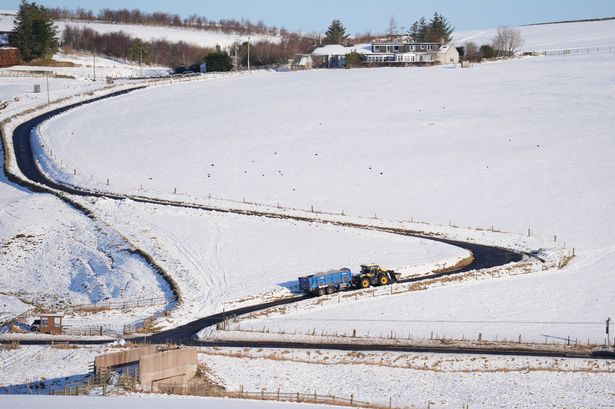The remnants of Storm Herminia, christened by the Spanish Meteorological Service, are poised to brush against the United Kingdom, bringing with them a prelude of unsettled weather. While the storm’s core is expected to remain largely offshore, its outer bands will still deliver a period of increased winds and rainfall across parts of the UK, particularly in western and northwestern regions. This initial influx of unsettled conditions, however, serves as a mere precursor to a more significant shift in the atmospheric pattern, as a wave of colder air prepares to descend upon the country in Herminia’s wake, ushering in a marked transition from the relatively mild autumnal conditions to a period of distinctly wintry weather.
The transition to colder conditions is anticipated to be relatively rapid, with temperatures dropping noticeably within a short timeframe. This swift change will be driven by a shift in wind direction, as northerly and northeasterly winds begin to funnel down from the Arctic regions. This influx of frigid air will not only lower temperatures but also increase the likelihood of wintry precipitation, including sleet and snow, especially over higher ground and in northern parts of the UK. Coastal regions exposed to these northerly winds will also experience a significant wind chill factor, making temperatures feel considerably colder than the actual recorded values. The combination of lower temperatures, strong winds, and the potential for wintry precipitation will create challenging conditions, particularly for vulnerable populations and those engaged in outdoor activities.
The arrival of this colder air mass signifies a departure from the prevailing weather patterns of recent weeks, which have been characterized by relatively mild temperatures and a prevalence of westerly winds bringing in milder air from the Atlantic. This shift towards a more wintry regime aligns with the typical seasonal progression, as the northern hemisphere tilts further away from the sun and the days grow shorter. The reduced solar radiation weakens the atmospheric stability, allowing for the intrusion of colder air masses from the north. This transition can often be marked by periods of unsettled weather, as the clash between warmer and colder air masses creates dynamic atmospheric conditions conducive to the formation of storms and precipitation.
The potential impacts of this impending wintry weather extend beyond mere discomfort. The combination of low temperatures, strong winds, and potential snowfall can disrupt transportation networks, leading to delays and cancellations of flights, trains, and road journeys. Accumulating snow can also pose challenges for power grids, potentially leading to outages as the weight of the snow puts stress on power lines. Furthermore, the cold weather can exacerbate existing health conditions, particularly respiratory illnesses, and increase the risk of hypothermia for those exposed to the elements for extended periods. Therefore, it is crucial for individuals and communities to take appropriate precautions to mitigate the potential risks associated with this change in weather.
Preparing for the anticipated wintry conditions involves a range of measures, starting with staying informed about the latest weather forecasts and warnings issued by meteorological agencies. It is important to monitor the evolving weather situation and adjust plans accordingly. Ensuring adequate home heating is essential, as well as having supplies of essential items, such as food, water, and medications, in case of power outages or travel disruptions. When venturing outdoors, appropriate clothing is crucial, including layers of warm clothing, hats, gloves, and scarves, to protect against the cold and wind. If driving is necessary, it is advisable to check road conditions and ensure the vehicle is equipped for winter driving, including having winter tires fitted and carrying emergency supplies.
The arrival of the remnants of Storm Herminia and the subsequent influx of colder air mark a significant shift in the UK’s weather pattern. While the initial impact of Herminia itself may be relatively limited, the following cold snap carries the potential for more widespread disruption and necessitates a proactive approach to preparedness. By staying informed, taking appropriate precautions, and adapting to the changing conditions, individuals and communities can minimize the potential risks and navigate this transition to wintry weather safely and effectively. The key is to remain vigilant, adaptable, and prepared for the challenges that the coming weeks may present.














